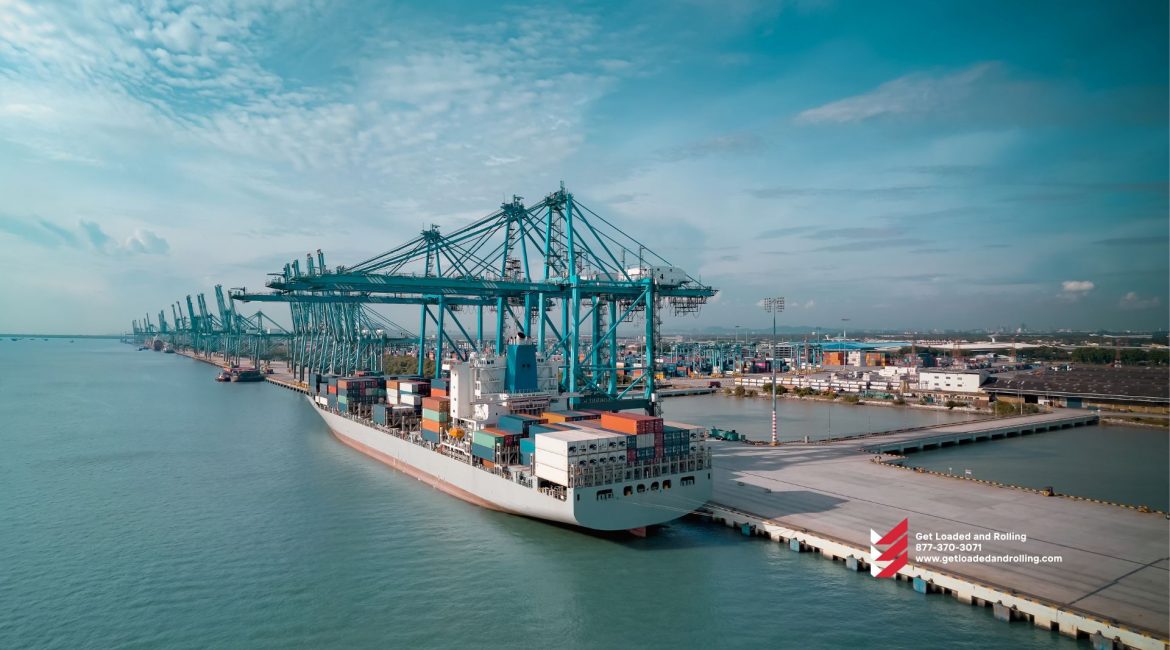So much for the theory that container lines are a nefarious cartel with the ability to control freight pricing; spot rates are still falling more than a year after they peaked.
“This cliff that rates have fallen from shows that there is more competition in the market than many people had feared,” Patrik Berglund, CEO of rate-tracking company Xeneta, told American Shipper in a recent interview.
Spot-rate declines slowed in some trade lanes in October compared to August and September. However, rate losses in many lanes resumed in November, causing global averages to fall even further. Most trades show no signs of a market bottom.
In an online post about recent spot-rate action, Lars Jensen, CEO of consultancy Vespucci Maritime stated, “We are coming out of the tunnel, only to discover that the bridge we are driving onto has collapsed.”
Drops since the peak
Different spot-rate indices produce different results, but they all show the same downward trend.
According to the weekly Drewry World Container Index, the global composite rate fell 78% between September 16, 2021, and Thursday. Drewry’s Shanghai-Los Angeles index fell 84% during that period, while its Shanghai-New York index fell 73%.
Drewry rate assessments indicate a gradual decline in the first half of this year, followed by a more precipitous drop beginning in August. Despite the significant drop from last year’s record high, the global index is still 61% higher than the pre-pandemic 2019 average.
Between September 5, 2021 and Thursday, the Freightos Baltic Daily Index (FBX) China-West Coast assessment fell 93%. Over that timeframe, the FBX China-East Coast rate has fallen by 84%. The FBX global composite has fallen by 75%.
The FBX indexes show a drop in Q4 2021, a plateau in January-April 2022, and a significant drop since May.
Trans-Pacific rate of change every week
Spot rates on the Asia-West Coast route have fallen more rapidly than in other lanes. Asia-West Coast spot rates appear nearing a bottom simply because they cannot fall much further. “There isn’t much more room for a reduction,” said Xavier Destriau, CFO of ocean carrier Zim (NYSE: ZIM), on Nov. 16.
The Drewry Shanghai-Los Angeles index fell the most in the week ended September 8, when average rates fell 14%, or $780 per forty-foot equivalent unit, compared to the previous week. Weekly declines slowed in October and November. The Shanghai-Los Angeles rate fell only $30 per FEU, or 1.4%, in the week ended Thursday, to an average of $2,039 per FEU.
In the Asia-East Coast trade, lingering congestion and high import volumes have kept spot rates higher for longer, implying that they still have plenty of room to fall.
The Drewry Shanghai-New York index dropped the most in the week ended September 22: 9%, or $776 per FEU, compared to the previous week. In contrast to the Asia-West Coast market, Asia-East Coast rates show no signs of bottoming and continue to fall significantly. Rates fell 9%, or $438 per FEU, in the week ending Thursday compared to the previous week.
Global indexes’ weekly rate of change
Global composite indexes are continuing to fall due to ongoing declines in the Asia-East Coast trade lane and weakness in other trades such as Asia-North Europe.
The Drewry global composite fell the most in percentage and dollar terms per FEU in late September. Over the last month, it has continued to experience significant weekly drops. It fell 9%, or $277 per FEU, in the week ending Nov. 10.
The weekly Shanghai Containerized Freight Index (SCFI), released every Friday, is the most closely followed index among shipping analysts. It has followed the same pattern as Drewry’s global index, falling the most in September but continuing to fall in November.
The impact on contract rates
The vast majority of containerized cargo is moved under long-term contracts rather than on a spot basis.
However, spot-rate movements are becoming increasingly important for three reasons: Shippers with contracts are shifting more volume to spot to save money, reducing contract volume; spot rate declines to levels below contract rates have compelled shipping lines to lower some existing long-term rates mid-contract, and upcoming negotiations on 2023 annual contracts will hinge on where spot rates end up. Most Asia-Europe annual contracts start on January 1st, and most Asia-US contracts start on May 1st.
Long-term shipping rates are already falling ahead of those dates due to new contracts signed at other times of the year and existing contracts being renegotiated lower.
Long-term rates are tracked by the Xeneta Shipping Index (XSI). The global XSI dropped 5.7% from October to November, the largest month-on-month drop since Xeneta launched the index in 2019. Month on month, the regional index for US import contracts fell 8.9%. The Far East export index fell 8.5%, the most in any previous month.
“We’ve already seen how spot rates have collapsed since summer,” Berglund says. We’re now seeing a ‘catch-up’ as existing [annual] contracts expire and new contracts take effect.”
If spot rates do not find a floor soon and continue to fall during the first half of next year, ocean carriers could face a particularly painful drop in Asia-US contract rates in 2023. With spot rates falling, ocean carriers will be in an even worse position to negotiate next year’s agreements.
